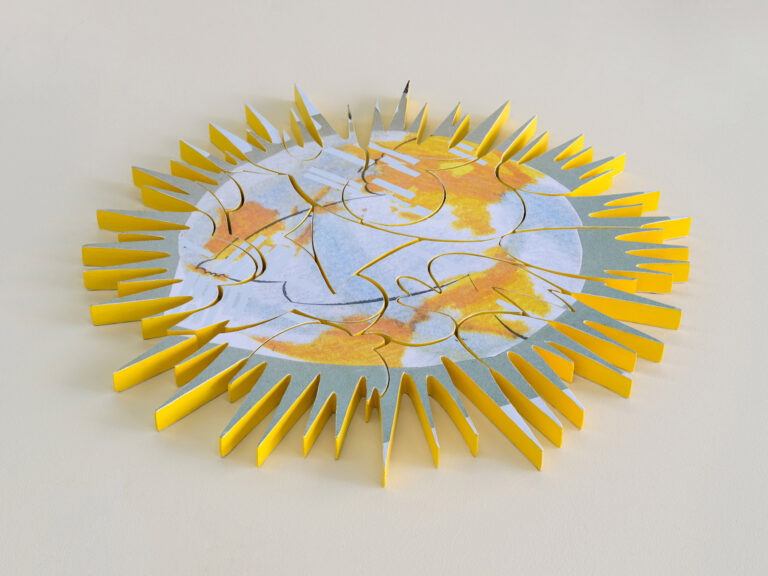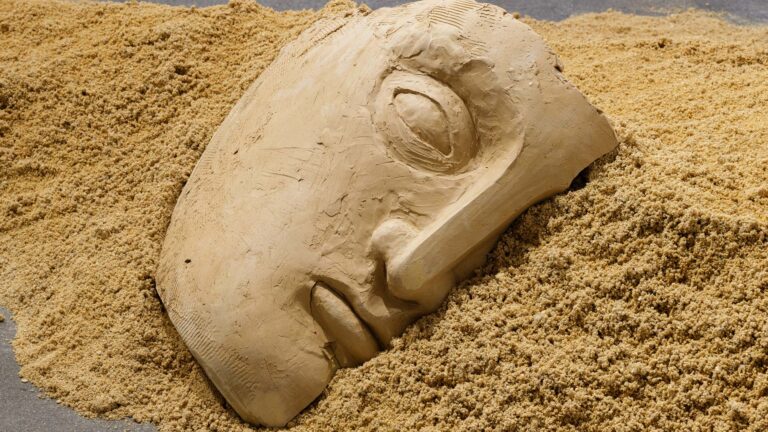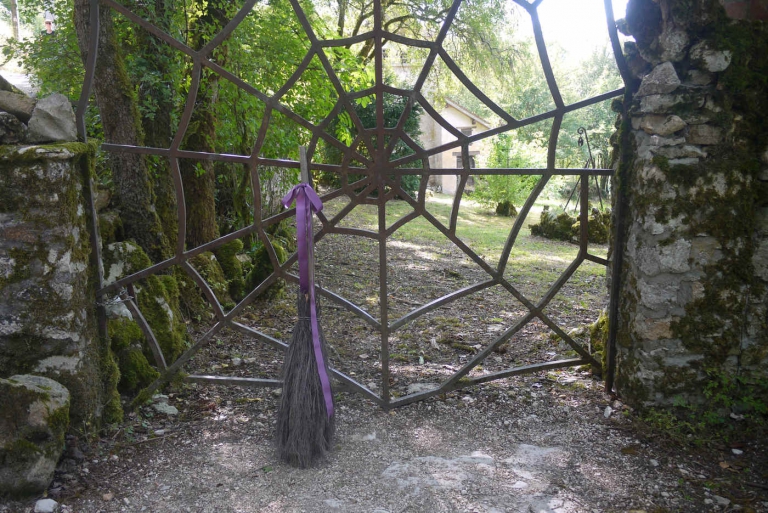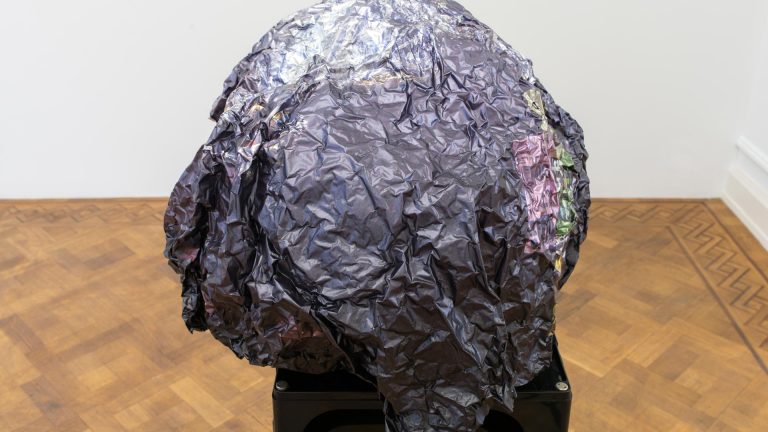Over the past few years, the exploration of painting as a medium—specifically its capabilities and capacity as a visual language—has become more prominent in the work of David Maljković. To be sure, the problematization of media codes and epistemological dispositions within painting, the abstraction of pictorial properties, and their transfer to different media realities are constants in Maljković’s art. Therefore, the presence of easel painting at an exhibition or the use of painterly procedures should not be viewed as a return or revival, but rather as a continuation of his poetic protocols. These protocols are, very generally speaking, aligned with the logic of deconstruction, which is based on the dissociation of various visual formations or entire sign systems (such as individual works of art, painting, architecture, scenography, etc.) from their essential properties, identities, and functions, reducing them to fragmentary, peripheral aspects of appearance. This remnant of form becomes a factor of the new symbolic reality that the exhibition somehow holds together.
Similar principles are at work here. The exhibition at Dvir consists of several interconnected elements from different classes of objects. Maljković forms a loose spatial installation, supplementing paintings and drawings on canvas with large-formatted MDF panels, whose fronts are painted to suggest a kind of colour chart, and a direct intervention on the wall—another “painterly” colour palette, studded with ambiguous stucco accents. All these elements are objects held in tension by the multiple conflicting codes they carry. Thus, in addition to compositions made using classic painterly procedures, the easel paintings are occasionally enhanced by laser drawings, which in some places extend beyond the painting’s field onto the supporting boards and frames. In some instances, painting is missing altogether, and the laser drawing is the only intervention on the raw canvas. The colour charts on MDF panels seem to be part of the working process, a rehearsal for the paintings. However, as these panels are conventionally used to make doors, they are also articulated within the exhibition set-up in a sculptural-spatial sense; massive supports and door knockers enhance their materiality, opening up further connotations that negate their ability to function as neutral backgrounds. Something similar happens with the walls, onto which the artist has transposed analogous painterly and other formative procedures, disturbing the clear and unambiguous demarcation between the space of the painting and the space outside it, between the artwork and the environment. With his gigantic “painterly” strokes and the evocative fragments that play against the decorative frames, Maljković attacks the ontological integrity of the concept of easel painting, whose determinations become emancipated.
While exploring this new potential, the exhibition also contains some “iconographic” constants within the artist’s practice, particularly on the level of design. There is Maljković’s trademark colour palette and manner of painting; even without insight into his immediate motivations, one can discern a dialogue with the modernist tradition of “colouristic” painting (a tendency especially present in interwar art in Croatia), and even with certain genres, such as landscape painting. Although nature is not present as a direct motif, such painterly codes resonate in the characteristic colour spectrum, which is dominated by greens. There are recognisable figurative elements, such as the painter’s palette, the easel with a canvas, the figure of a painter, the atelier—all emblems of painting per se, which also include a meta-painterly reflection on painting as such, but also on art in general. Of course, these references to the practice of painting also have an iconographic function: even the relatively small formats suggest a “working” process of studio painting. The arrangement of artworks in space anticipates a choreography of movement, defining vantage points and directions of one’s gaze to these repeated motifs.
Although Maljković’s artistic work—due to the confluence of form and content—is generally closed to far-reaching interpretations, the artist still summons certain topics into his semantic orbit. Among these is the temporality of art and the continuity of visual memory: the hypothesis that codes and patterns are transmitted and persist, emptied of their initial meaning and separated from their original context, generating a reality that claims its own autonomy. Like genetic material, this reality is inherited and passed on involuntarily and without control, but in the meantime, it is freely disposed of, adding functions, identities, and meanings, and legitimizing itself through interpretations in accordance with the values of the moment. The meaning of the inherited is always, therefore, both current and historical, but as such, also accidental and expendable; the meaning itself is not transferred to the future—only impressions and traces, reflections of once-meaningful structures. It is therefore possible to suggest that this exhibition mediates the idea of the transit of a specific visual language in time; it examines the reality of its duration, which has no definite foundation, but is based on random sampling, as indicated by the titles of the artworks (Model, Prototype , Sample, etc.). This time, the focus is on the language of painting. Rather than simply painting, Maljković imitates painting procedures and materials, as well as formulas of painterly enactment, elaborating on the medium with its artistic and even discursive aspects. Inspired by works of art from the near and distant past, he uses them as a codebook, reducing their artistic content to a code, which is now proliferated uncontrollably through machine iteration, conquering new dimensions. As an encoded message, pictorial reality is transmitted to the future, “saved” from incineration in historical time. It is therefore not unimportant that the encoded information is also aesthetically attractive, because the reality of art appeals to sensory knowledge, relying on beauty, counting on being intuitively remembered and reproduced, regardless of the circumstances or context.
-Ivana Mance Cipek















































